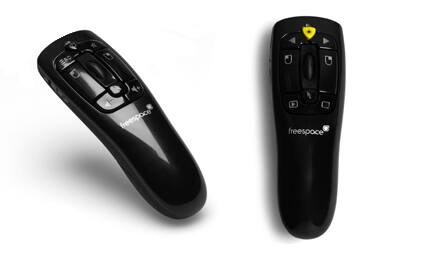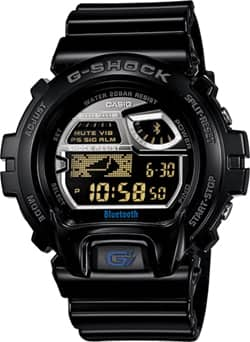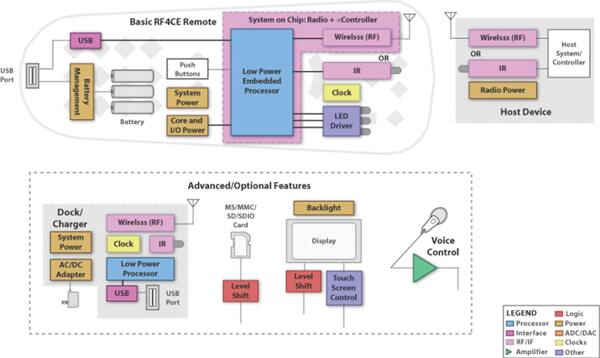Touching on Opportunities for Self-Powered Human-Machine Interfacing
投稿人:DigiKey 欧洲编辑
2013-07-10
Talking to inanimate objects used to be considered borderline behavior, but today we don’t bat an eyelid. Although maybe we should! Eye movement (or the lack of it) is one way that vehicle systems can tell if the driver is dozing off. How we humans interface with electronic products is changing fast, thanks to a combination of sensor, processor/controller and wireless networking technologies.
Touchscreens, gesture, and voice recognition are among the popular techniques used in today’s human-machine interface (HMI). Applications include smart homes and buildings, automotive, industrial automation, and, of course, mobile digital consumer devices. Connectivity, increasingly based on wireless networking, is another essential element in the equation.
The focus of this article is to show where energy harvesting has a potential role to play in HMI connectivity. Key applications are portable and wearable devices, where power consumption remains a crucial issue, including medical devices, sports monitoring and remote-control interfacing devices.

Bluetooth Low Energy, ZigBee RF4CE and ZigBee PRO Green Power are the protocols that fit best with energy harvesting techniques. A wide range of devices supporting these standards is available.
Texas Instruments, for example, offers a number of complementary devices that together can form a solution for wearable devices that can be powered by scavenged energy. These include the TPS6273x range of high frequency synchronous step down DC-DC converters, and the CC2541 power-optimized SoC for Bluetooth low energy connectivity, both available with evaluation kits.
Similarly, Atmel offers microcontrollers and transceivers in chip, system-on-chip, board and module formats. While the ATMEGA 256RFR2 range of microcontrollers supports RF4CE and ZigBee protocols, the low power, low voltage RF transceiver families, which include the AT86RF233, are described as ideal for energy harvesting applications.
You wear it well
For the ultimate in remote control, wearable devices have the edge. Finger tracking through a wrist-worn device is envisaged for teaching deaf people to learn sign language, giving them instant feedback. Imagine a tap of the finger on your wristwatch to turn the heating in that room up a notch, two taps to turn it down. Embedded sensors are detecting changes in temperature, humidity, and light. Your preferences are noted so that settings can change next time you are detected entering the same room or workspace.

Unobtrusive wearable devices for health and fitness monitoring and sports training are under constant evolution. More accurate and sensitive electrostatic sensors can detect electric field changes down to millivolts, making them applicable to heart rate monitors – both wearable and handheld. Data is transmitted via Bluetooth, for example, to a smartphone or dedicated receiver device, which can provide a simple analysis of heart rate. Applications are seen not only in medical monitoring devices, but also for fitness monitors and sports training aids, detecting aerobic performance, for example.
Manual control
The smart home is fast becoming a haven for sensors and their associated controls, enabling us to interact with our digital devices. The key is to make the smart home as simple as possible. Some functions remain automatic; proximity sensors detect our presence and are programmed to turn on lights, for example. But now we have capacitive proximity sensors, used to recognize hand waving gestures to allow us to fine tune or turn equipment on or off.
The TV remote ‘line of sight’ control unit is changing, almost beyond recognition. The 30-year old infrared technology is giving way to RF communication. Instead of pointing the remote control device at the TV, we can point at the remote control device. The change is driven by a massive evolution in television technology and new content options. Program selection, video streaming, feature selection, gaming, access to social media and a host of other features require a new human-machine interface. Consumers need to interact with a TV set much more precisely than before, whether it be scrolling menus or playing games.
Which wireless protocol to choose
Whether we are talking about wearable devices, sensor networks in buildings or remote control devices, it is wireless connectivity combined with sensor fusion that allows for increased functionality, greater reliability and two-way communication. Protocols such as ZigBee RF4CE and Bluetooth Low Energy are designed to support intuitive interfacing with low power consumption, making them ideal for the application of energy harvesting technology.
ZigBee RF4CE is a specification designed for very low latency applications such as remote controls and other HMI devices. Based on the IEEE 802.15.4 (2.4 GHz) standard protocol, features support low power/long battery life, easy installation, high reliability over a longer range, and protection against RF/Wi-Fi interference.
Designed for use with the RF4CE specification is the ZigBee Remote Control standard. It provides a universal standard for advanced, energy efficient remote control units. Benefits include greater design flexibility, allowing control from within cabinets or behind walls, plus lower power operation.
ZigBee Input Device is also designed for ZigBee RF4CE, to facilitate more energy efficient HMI devices such as mice, keyboards, touchpads, and wands. It offers native support of multi-touch and gesture commands, and is compatible with ZigBee Remote Control equipped products.
The ZigBee PRO specification offers ‘Green Power’, facilitating connection of energy harvesting or self-powered devices into ZigBee networks. The standard incorporates power saving mechanisms for all device classes, as well as support for battery-less devices. ZigBee Green Power is ideal for self-powered wireless sensor nodes that may be moved regularly, or for incorporating new functionality into an existing environment.
Bluetooth Low Energy is seen as an alternative, as well as a complementary option to RF4CE for the next generation of remote control devices. Although already used in the home in such applications, Bluetooth Low Energy is showing wider promise in healthcare, monitoring, sports, and game applications.
This protocol is designed specifically for applications with a low duty cycle, such as a heart rate monitor, that may be connected for several hours at a time, but would only transmit a few bytes of data a second. It is also ideal for applications where a smartphone app can provide the user interface and/or where data is transmitted via the Internet.
Supplementary power
Yet while some user interface features, such as voice control for example, may be incorporated into the TV set itself, there will still be a need for a remote control device, whether it is wearable, a smartphone, or a similar unit. Additionally, like so many of these devices, low power is essential to preserve battery life, and reduce the time between charging or battery replacement.
Such devices are effectively ‘always on’, waiting for an activation signal. Today’s technology yields very low power consumption figures, down to mW in an active sensing state, and even lower in standby or sleep modes. However, power management, whether for battery operated units or battery-free sensor nodes, remains a critical function.
This is where energy harvesting can play a role, powering certain functions autonomously or to trickle charge the battery. Incorporating miniature solar cells in the casing to generate energy from ambient light can make a difference. Alternatively, in today’s smart home where wireless connectivity abounds, harvesting RF power is another option. In sports equipment, harvesting kinetic energy (pedal power!) is an obvious choice. Energy can even be harvested from body heat.
Systems solutions
Texas Instruments offers literally hundreds of devices that can be part of HMI connectivity solutions, supporting a wide range of features and industry standards. Many of these are ultra-low power components ideal for operation from scavenged energy directly. On the other hand, they can be used in battery-operated systems, in conjunction with energy harvesting components and specialized power management circuits.
A prime example is TI’s CC2541 Bluetooth Low Energy system on a chip (SoC), aimed at smart sensor applications for wearable and portable consumer medical, sports, and fitness devices, as well as entertainment and home automation products. The device also supports proprietary 2.4 GHz applications, and is pin compatible with its CC253x ZigBee RF4CE solutions. This last factor is important for product evolution, while maintaining application software investment, keeping costs down, and speeding time to market.
The CC2541 is designed specifically for ultra-low power consumption applications. When used in conjunction with TI’s TPS62732 step down converter, the current drawn from the battery, particularly in receive and transmit modes, can be reduced by a further 20% to 14 mA. With an input voltage range of 1.9 to 3.9 V, the TPS62730 features an ultra-low-power bypass mode with typical 30 nA current consumption to support the sleep and low power modes of the CC2541.
Additional applications for the TPS62732 include RF4CE designs (see below) and other low power wireless systems. An evaluation module TPS62730EVM-726 for this device range is also available.
A recent addition to the range is the TPS62736. It is specifically designed to increase the amount of harvested energy a product can exploit, and is targeted at wireless sensor networks, wearable monitoring devices, and mobile accessories. It delivers high power conversion efficiency from 10 µA to 50 mA output currents, yet consumes only 350 nA of active current, dropping to 20 nA in standby mode. The regulator can be used to step down the voltage from a power source such as a thin film battery or super capacitor, and features a programmable output voltage.
For ZigBee applications, the CC2533 provides a simple means of adding RF4CE capability to a device when used in a wireless network process configuration. Robust network nodes can be built with very few components. Combining RF transceiver with an 8051-compliant CPU, up to 96 kbytes flash memory, and up to 8 kbytes ram, the device has efficient power modes with RAM and register retention of less than 1 µA. It is ideal for low duty-cycle systems where ultra-low power consumption is required, including systems that are powered or part-powered by harvested energy. Short transition times between operating modes further ensure low energy consumption.
Figure 3 (below) shows how the CC2533 can be designed into a remote control device (top left), incorporating the TPS6273x step down converter to provide system power. It would be feasible to incorporate energy harvesting to keep the batteries topped up between charging cycles. A comprehensive development kit, the CC2533DK-RF4CE-BA, is available for designers keen to evaluate the simplicity of this solution.

Figure 3: Block diagram of an RF4CE remote control system, based on TI’s CC2541.
From chip to module
Targeting intelligent HMI applications, such as capacitive touch, Atmel also takes a solutions approach. The company promotes a variety of offerings, including SoCs, RF transceivers, bundled microcontroller/RF transceivers, and board-level modules. The aim is to allow designers to pick the microcontroller and RF transceiver combination best suited to the target application, and in the format most convenient to the product development schedule and project team skills.
Single-chip solutions include the ATmega256RFR, which combines an 8-bit microcontroller and RF transceiver supporting IEEE802.15.4 ZigBee RF4CE among other 2.4 GHz protocols. With flash memory up to 256 k, the device allows for 16 MHz operation at a supply voltage as low as 1.8 V, making it ideal for battery-operated or battery-free applications, powered or supplemented by harvested energy. Advanced power saving features include fast wake-up time from sleep to active modes and wake-on-radio which keeps the RF transceiver active while the microcontroller sleeps. This last feature is eminently suitable for HMI applications where a sensor node is waiting for a signal to wake up a device. An evaluation kit, the AT256RFR2-EK, is also available to help designers get started.
For high performance, power efficient wireless applications, Atmel offers a range of transceivers, supporting both 700/800/900 MHz and 2.4 GHz frequency bands. Special features include antenna diversity and external power amplifier support to boost transceiver performance.
For standard ZigBee applications, the AT86RF212 is a low power, low voltage RF transceiver. Whereas for 2.4 GHz systems, the AT86RF23x family is available. The AT86RF233 is the ultra-low-power device, claimed by Atmel as being ideal for battery operated wireless applications, including home appliances, home entertainment remote control units and industrial equipment, and is especially targeted at energy harvesting systems.
It comprises an analog radio transceiver and digital demodulator, with time and frequency synchronization and data buffering. An internal 128 byte RAM buffers transmit and receive data. Two on chip low drop out (LDO) voltage regulators, typical in many energy harvesting systems, provide the internal analog and digital 1.8 V supply.
A development kit, the REB233SMAD-EK demonstrates the potential of the AT86RF233 transceiver, and is supplied with the ATxmega256A3 microcontroller, radio extender board, controller baseboard and USB cable. The kit can be configured to form a fully functional, battery-powered wireless node. Further support is available in the form of the Atmel BitCloud stack, a ZigBee PRO certified platform, ideal for the design and prototyping of ZigBee-compliant home automation wireless applications.
In terms of bundles, Atmel has a wide range of combinations of microcontrollers and transceivers to support IEEE 802.15.4 and ZigBee applications. Of additional interest is support for capacitive touch for intelligent human-machine interfacing. The ATAVRTS2080A is an add-on kit based on Atmel’s QTouch library, containing an evaluation board, sensors and an ATmega88 8-bit microcontroller, and operating from a supply voltage as low as 1.8 V.
Summary
This article has highlighted that ultra-low power HMI connectivity solutions, particularly battery-powered portable and wearable devices, have great potential for the application of energy harvesting techniques. Many of the readily available ultra-low-power microcontroller and transceiver devices, based on Bluetooth Low Energy and ZigBee RF4CE, have been developed for applications that are either battery powered and boosted by scavenged energy or completely autonomous.

免责声明:各个作者和/或论坛参与者在本网站发表的观点、看法和意见不代表 DigiKey 的观点、看法和意见,也不代表 DigiKey 官方政策。








 中国
中国